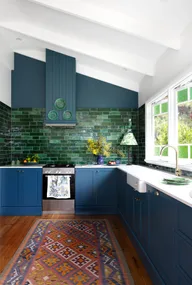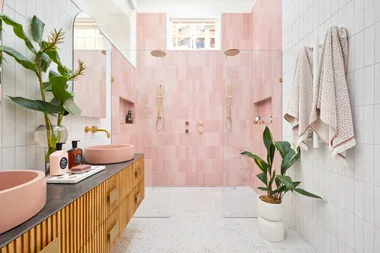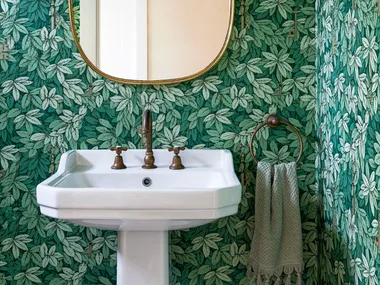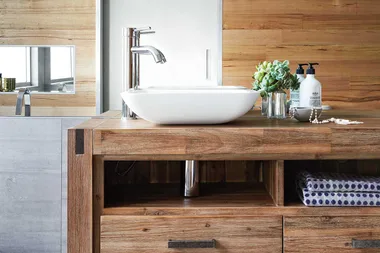Our guide to planning a functional and beautiful bathroom layout will help you configure a comfortable space that meets your family’s needs.
Whether you’re remodelling or building, designing the perfect bathroom is an exciting and thoughtful process. To help bring your dream bathroom into focus, take time to assess your needs and devise an efficient layout. With a smart strategy in place, it’s easier to set a budget, hire contractors, and shop for beautiful finishes.

A functional floor plan is the key to building and remodelling success. To determine space-planning requirements, answer the questions below to shed light on how you’ll use the space. For an existing bathroom, assess the pros and cons of the current layout. For a new bathroom, think about how your dream space would function.

Questions to Ask Yourself When Planning a Layout
- Who will use the bathroom? For example, will two adults share the space during the morning rush hour? Is the bathroom limited to occasional guest usage? Are children who need assistance the primary users? Will you bathe a pet in the bath?
- How will it be used? What activities will be done in the various parts of the room? For example, will you require a place to sit and apply makeup? Will the room also house laundry facilities? What activities can be done in a shared space, and which require a private area? Do you prefer separate shower and bath areas? Would you like a tub that accommodates more than one person? Do you want the water closet in its own compartment?
- Where will things go? What items need to be stored in the bathroom, and where should they be located for easy access?
The answers to these questions can shed light on how much open floor space is needed for navigation around the room, what size bath or shower makes sense, whether two sinks are necessary, and more. When crafting the perfect floor plan, don’t underestimate the importance of storage.

Even in a petite bathroom, you can find more storage solutions than just the vanity cabinet by adding a toilet surround, over-door shelving, or a recessed medicine cabinet.
With that information in mind, you can begin to place the key elements in the room — the bath, shower, toilet, and sink(s). Not sure where to begin? We’ve listed three popular bathroom designs below. See which one fits your home and needs best.
Three-quarter bathroom (no bath)
With only one sink and a shower, this is a hardworking plan for a guest bathroom. All plumbing on the same wall saves labour and supply expenses. If visitors will use or see your bathroom, consider what they will first notice from the doorway.
Full bathroom
A bath/shower combination is a good choice for many baths, especially a space that may be used by children as well as adults. The bath’s end wall and the way the door opens is a way to help keep the toilet separate from the rest of the space. Often a full bathroom has space for a roomy vanity, or double vanity.
Posh bathroom
When you need to share but space is limited, this layout makes perfect sense. The large bath is framed by an alcove with end shelves for added storage, and the double vanity saves space with shallow ends. The walk-in shower saves money because it doesn’t require a door.
Consider Walls
Whatever the size of your bath, keep in mind that the more walls that contain plumbing pipes, the higher the price tag. If you’re building new and budget is a concern, limit plumbing fixtures to one wall. If you’re remodelling, try to keep load-bearing walls where they are and avoid rerouting plumbing and electrical lines. In all cases, remember that varied rooflines, curved walls, arches, bump-outs, and other character-enhancing features will drive up your total price tag.
Next Steps
With the layout in place, you can begin to think about design. Collect images of bathrooms you like, and then find the common themes to determine your style. Heading to the store with a clear vision will make it much easier to whittle down the choices for cabinets, hardware, and other finishes.
This article originally appeared on www.bhg.com.
 Sue Stubbs
Sue Stubbs









